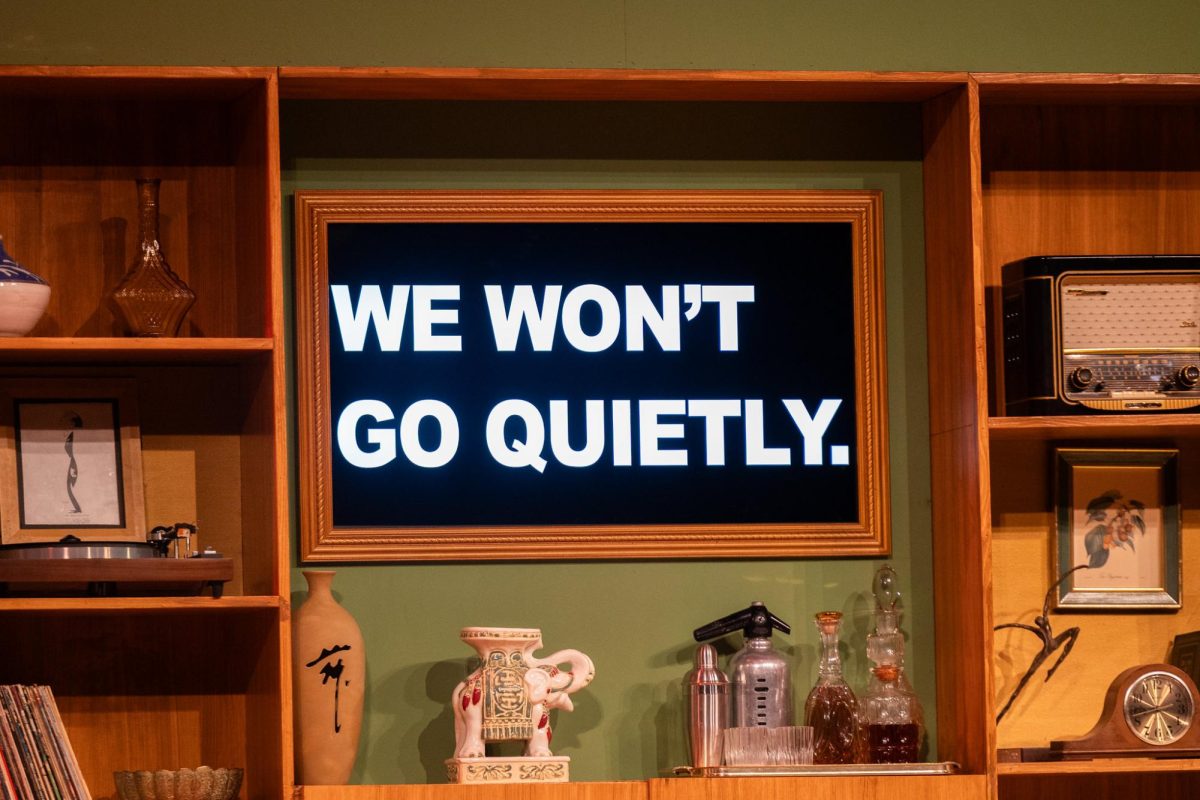Wes Anderson’s latest opus, “The Grand Budapest Hotel,” is a delightfully layered narrative accompanied by his signature directing style and whimsical aesthetics.
The film’s main story revolves around a young lobby boy, Zero (played by the fresh yet adept Tony Revolori) and his mentor, hotel concierge Monsieur Gustave H. in war-torn 1930s Europe.
Gustave, played by Ralph Fiennes, is a very professional man who sleeps with a very specific type of older wealthy women in exchange for returning business, lavish gifts and customer satisfaction.
Gustave is named the heir to the painting “Boy with Apple” which holds priceless value after one of his “guests” dies shortly after a visit. This of course caused outrage from the biological family, including the late guest’s son (Adrien Brody) and thrusts Gustave and Zero into a wild run from the police and a hit man.
While trying to rightfully claim and hide the painting, they cross paths with hardened criminals (Willem Dafoe), bookish lawyers (Jeff Goldblum), friendly police officers (Edward Norton) and a secret organization of hotel concierges (Bill Murray and Owen Wilson), all of whom have appeared in previous Anderson films.
One of the main points of joy and excitement when seeing an Anderson film is having famous faces unexpectedly cameo as characters that seem unlike anything they have done before. Fiennes, best known for being Lord Voldemort for instance, plays a beloved, mild mannered hotel concierge.
The film also includes a frequently used Anderson plot: a youthful romance between Zero and a young pastry chef Agatha (Saoirse Ronan) that puts to shame almost all mature relationships in terms of passion, loyalty and beautifully sewn together sweetness.
Yes, Anderson has used the same tropes, directing styles, whimsical color and set dressings in almost all of his films over the past decade, yet it is hard to feel like he is repeating himself when each work shines brightly in its own right.
“The Grand Budapest Hotel” takes place in four separate time periods. The story of Gustave and Zero takes place in the 1930s yet it is narrated by a much older Zero, who is speaking to Jude Law, a traveling writer, in the year 1962.
This story, as well as that of Gustave, is part of a book that was written by Law’s character many years later, which in present day is being read by a young girl in front of the author’s memorial.
This narrative choice, which does not necessarily affect the story any further than 1962, effectively ties together the piece and acts as a metaphor for the webs of human interaction and connection created by people that maintains long after they die.
This film continues Anderson’s career long streak of critical acclaim and audience adoration he has worked so hard to achieve. His writing abilities, directorial and stylistic choices have been winning over viewers for years, and his techniques have only improved with time.
Successfully balancing such whimsy with such thought-provoking dialogue, and deep, immediately empathetic characters is a skill that takes much cultivation.
Every piece of the set, outfits, dialogue, actors and beautifully recorded and cut bit of sound is all a part of the Anderson aesthetic, an aesthetic that has been evolving for 20 years and has become ingrained in the mind of his audiences to the point where any frame from one of his newer films would be almost instantly identifiable.
Anderson has truly mastered the style he wants to be known for and is apparently planning to work with for the rest of his career.
While at times the audience may want him to return to his more realistic, yet still whimsical style of his early works such as “Rushmore,” Anderson knows to stay a successful filmmaker he must continue to make each film even more stylistic and definitively Anderson than the last.



































